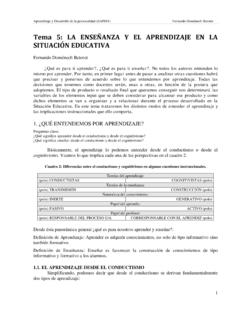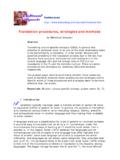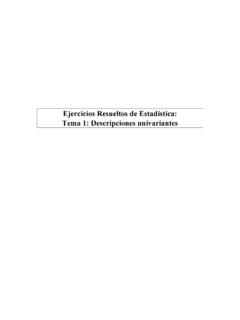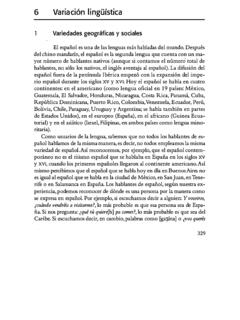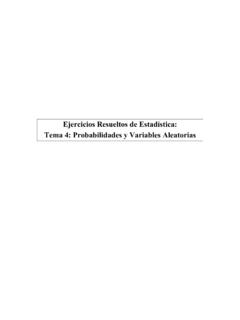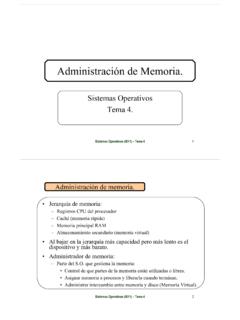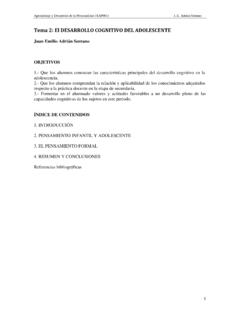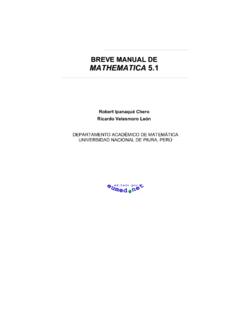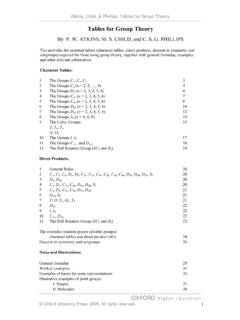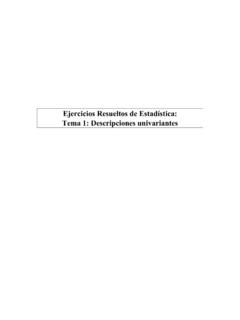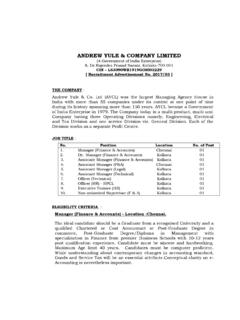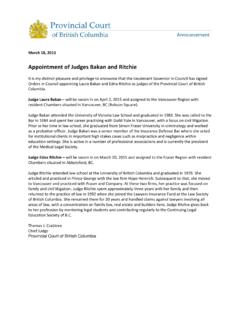Transcription of The Study of Language - UJI
1 TheStudyofLanguageFourth editionGEORGEYULE19 Language and social variationAdmittedly, it is hard to make stylistic judgements on slang from the past, but when we read aseventeenth- century description of someone as a shite- a-bed scoundrel, a turdy gut, ablockish grutnol and a grouthead gnat- snapper it s unlikely the writer was using the neutral or proper Language of the time I think we can safely assume he was using (2004)In the preceding chapter, we focused on variation in Language use found in differentgeographical areas. However, not everyone in a single geographical area speaks in thesame way in every situation. We recognize that certain uses of Language , such as the slangin Kate Burridge s description, are more likely to be found in the speech of some individualsin society and not others. We are also aware of the fact that people who live in the sameregion, but who differ in terms of education and economic status, often speak in quitedifferent ways.
2 Indeed, these differences may be used, implicitly or explicitly, as indicationsof membership in different social groups or speech communities. Aspeech communityis a group of people who share a set of norms and expectations regarding the use oflanguage. The Study of the linguistic features that have social relevance for participants inthose speech communities is called sociolinguistics. SociolinguisticsThe termsociolinguisticsis used generally for the Study of the relationship betweenlanguage and society. This is a broad area of investigation that developed through theinteraction of linguistics with a number of other academic disciplines. It has strongconnections with anthropology through the Study of Language and culture, and withsociology through the investigation of the role Language plays in the organization ofsocial groups and institutions. It is also tied to social psychology, particularly withregard to how attitudes and perceptions are expressed and how in-group and out-groupbehaviors are identified.
3 We use all these connections when we try to analyze languagefrom a social dialectsWhereas the traditional Study of regional dialects tended to concentrate on the speechof people in rural areas, the Study ofsocial dialectshas been mainly concerned withspeakers in towns and cities. In the social Study of dialect, it is social class that ismainly used to define groups of speakers as having something in common. The twomain groups are generally identified as middle class, those who have more years ofeducation and perform non-manual work, and working class, those who have feweryears of education and perform manual work of some kind. So, when we refer to working-class speech, we are talking about a social dialect. The terms upper and lower are used to further subdivide the groups, mainly on an economic basis,making upper-middle-class speech another type of social dialect in all dialect studies, only certain features of Language use are treated as relevantin the analysis of social dialects.
4 These features are pronunciations, words or struc-tures that are regularly used in one form by working-class speakers and in anotherform by middle-class speakers. In Edinburgh, Scotland, for example, the wordhomeisregularly pronounced as [he m], as if rhyming withname, among lower-working-classspeakers, and as [hom], as if rhyming withfoam, among middle-class speakers. It s asmall difference in pronunciation, but it s an indicator of social status. A more familiarexample might be the verbain t,asinI ain t finished yet, which is generally used moreoften in working-class speech than in middle-class we look for other examples of Language use that might be characteristic of asocial dialect, we treat class as thesocial variableand the pronunciation or word as thelinguistic variable. We can then try to investigate the extent to which there is system-atic variation involving the two variables by counting how often speakers in each classuse each version of the linguistic variable.
5 This isn t usually an all-or-nothing situation,254 The Study of Languageso studies of social dialects typically report how often speakers in a particular groupuse a certain form rather than find that only one group or the other uses the and occupationAlthough the unique circumstances of every life result in each of us having an individualway of speaking, a personal dialect oridiolect, we generally tend to sound like otherswith whom we share similar educational backgrounds and/or those who leave the educational system at an early age, there is a generalpattern of using certain forms that are relatively infrequent in the speech of those whogo on to complete college. Expressions such as those contained inThem boys throwedsomethin orIt wasn t us what done itare generally associated with speakers who havespent less time in education. Those who spend more time in the educational systemtend to have more features in their spoken Language that derive from a lot of time spentwith the written Language , so thatthrewis more likely thanthrowedandwhooccursmore often thanwhatin references to people.
6 The observation that some teacher talkslike a book is possibly a reflection of an extreme form of this influence from thewritten Language after years in the educational adults, the outcome of our time in the educational system is usually reflected inour occupation and socio-economic status. The way bank executives, as opposed towindow cleaners, talk to each other usually provides linguistic evidence for thesignificance of these social variables. In the 1960s, sociolinguist William Labov com-bined elements from place of occupation and socio-economic status by looking atpronunciation differences among salespeople in three New York City departmentstores (see Labov,2006). They were Saks Fifth Avenue (with expensive items,upper-middle-class status), Macy s (medium-priced, middle-class status) and Klein s(with cheaper items, working-class status). Labov went into each of these stores andasked salespeople specific questions, such asWhere are the women s shoes?
7 , in order toelicit answers with the expressionfourth floor. This expression contains two oppor-tunities for the pronunciation (or not) ofpostvocalic/r/, that is, the /r/ sound after avowel. Strictly speaking, it is /r/ after a vowel and before a consonant or the end ofa the department stores, there was a regular pattern in the answers. The higher thesocio-economic status of the store, the more /r/ sounds were produced, and the lowerthe status, the fewer /r/ sounds were produced by those who worked there. So, thefrequency of occurrence of this linguistic variable (r) could mark the speech samples asupper middle class versus middle class versus working class. Other studies confirmedthis regular pattern in the speech of New and social variation255In a British Study conducted in Reading, about 40 miles west of London, Trudgill(1974 ) found that the social value associated with the same variable (r) was quitedifferent.
8 Middle-class speakers in Reading pronounced fewer /r/ sounds than working-class speakers. In this particular city, upper-middle-class speakers didn t seem to pro-nounce postvocalic /r/ at all. They said things likeOh, that s mahvellous, dahling!.Theresults of these two studies are shown inTable (from Romaine,2000 ).Social markersAs shown inTable , the significance of the linguistic variable (r) can be virtuallythe opposite in terms of social status in two different places, yet in both places thepatterns illustrate how the use of this particular speech sound functions as asocialmarker. That is, having this feature occur frequently in your speech (or not) marksyou as a member of a particular social group, whether you realize it or are other pronunciation features that function as social markers. One featurethat seems to be a fairly stable indication of lower class and less education, throughoutthe English-speaking world, is the final pronunciation of-ingwith [n] rather than [ ]atthe end of words such assittinganddrinking.
9 Pronunciations represented bysittin anddrinkin are typically associated with working-class social marker is called [h]-dropping, which makes the wordsatandhatsound the same. It occurs at the beginning of words and can result in utterances thatsound likeI m so ungry I could eat an orse. In contemporary English, this feature isassociated with lower class and less education. It seems to have had a similar associationas a social marker for Charles Dickens, writing in the middle of the nineteenth used it as a way of indicating that the character Uriah Heep, in the novelDavidCopperfield, was from a lower class, as in this example (from Mugglestone,1995 ). I am well aware that I am the umblest person going, said Uriah Heep, modestly; .. My mother is likewise a very umble person. We live in a numble abode, MasterCopperfield, but we have much to be thankful for. My father s former calling wasumble.
10 Table of groups pronouncing postvocalic /r/Social classNew York CityReadingupper middle class320lower middle class2028upper working class1244lower working class049256 The Study of LanguageSpeech style and style-shiftingIn his department store Study , Labov included another subtle element that allowed himnot only to investigate the type of social stratification illustrated inTable , but alsospeech styleas a social feature of Language use. The most basic distinction in speechstyle is between formal uses and informal uses. Formal style is when we paymore careful attention to how we re speaking and informal style is when we payless attention. They are sometimes described as careful style and casual style. A change from one to the other by an individual is Labov initially asked the salespeople where certain items were, he assumedthey were answering in an informal manner. After they answered his question, Labovthen pretended not to have heard and said, Excuse me?
